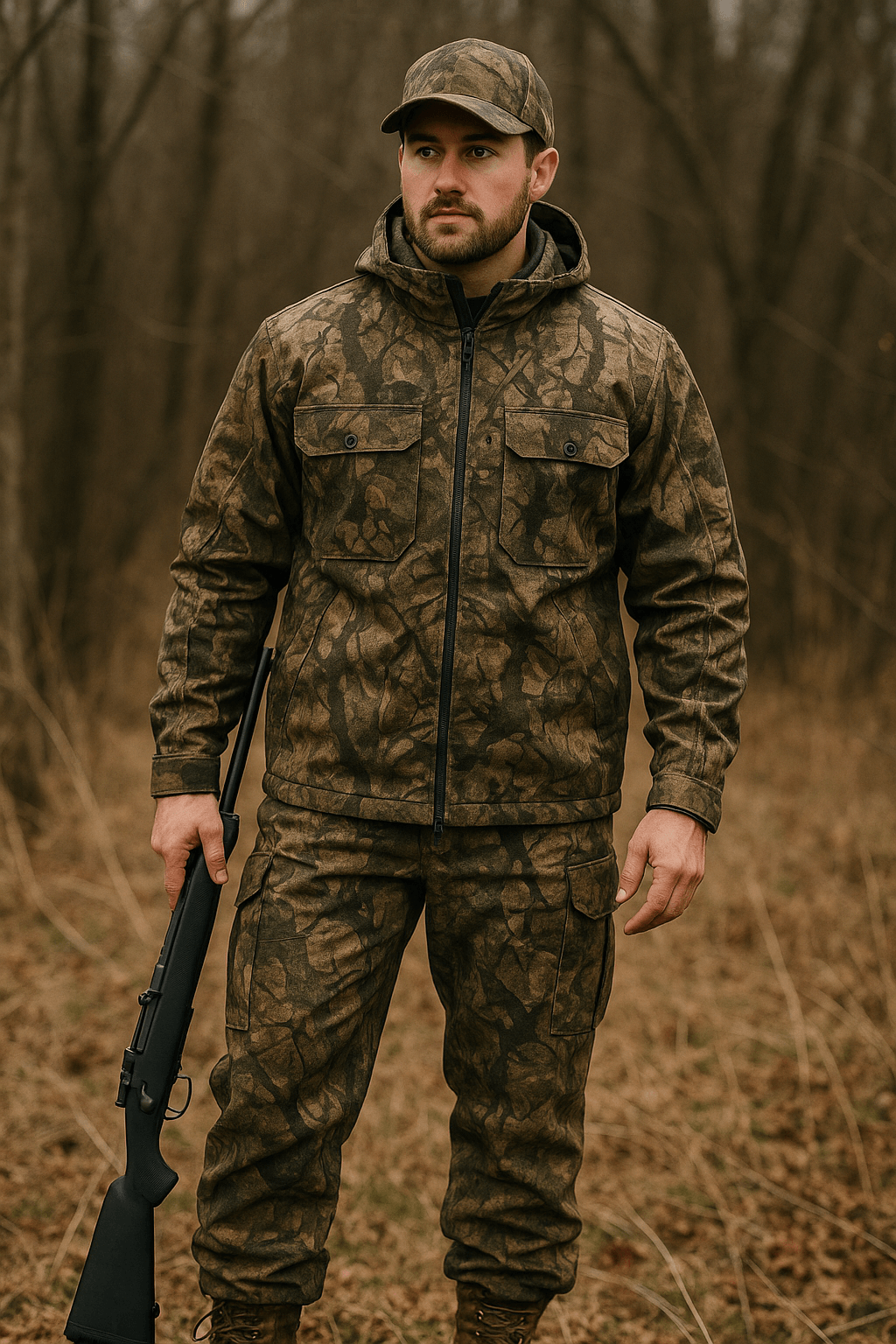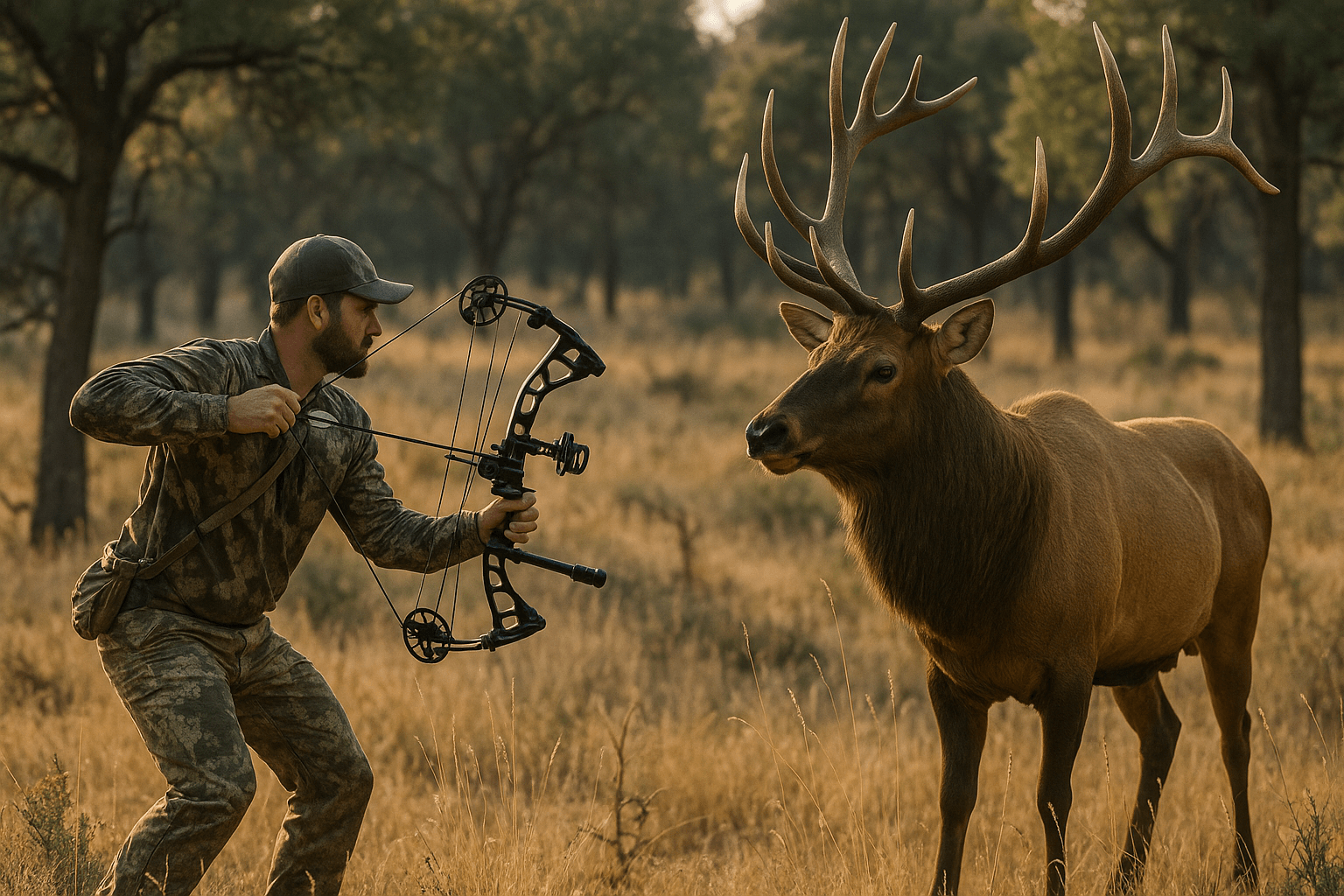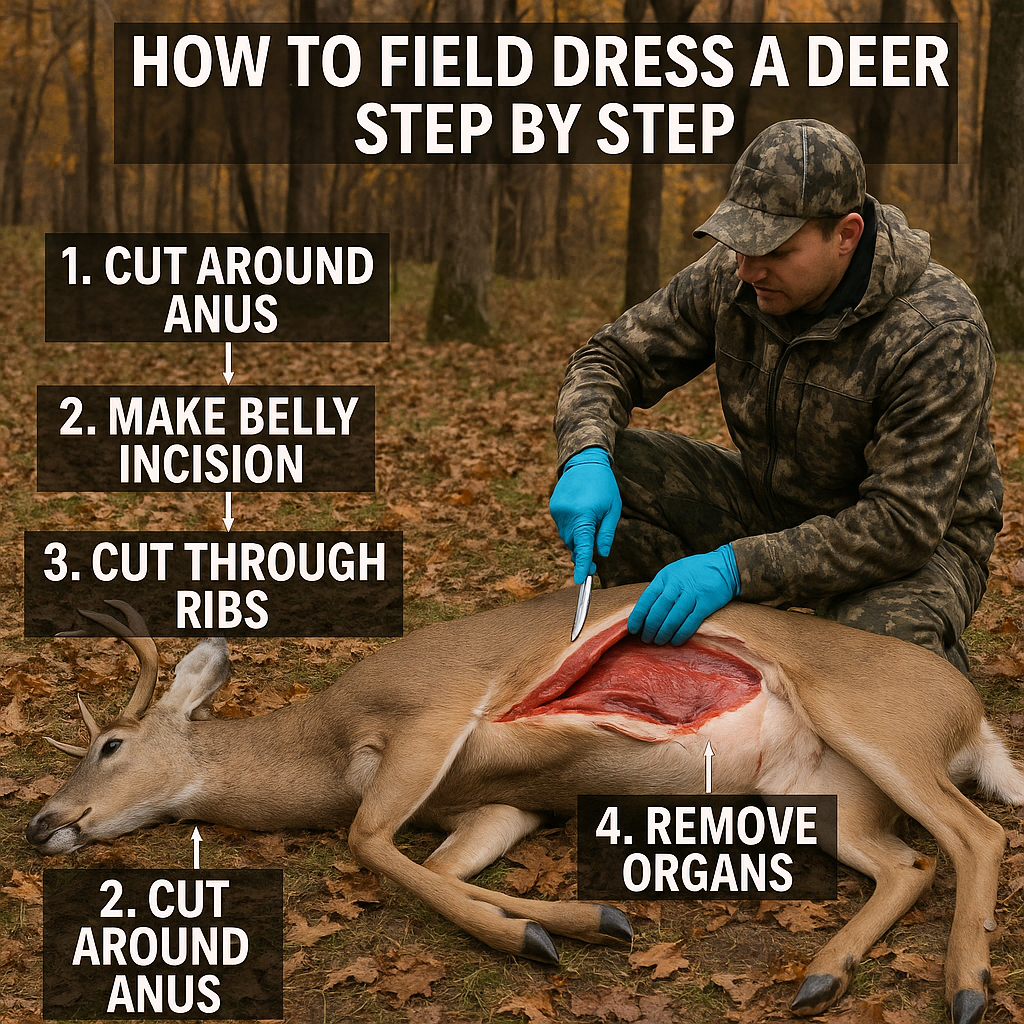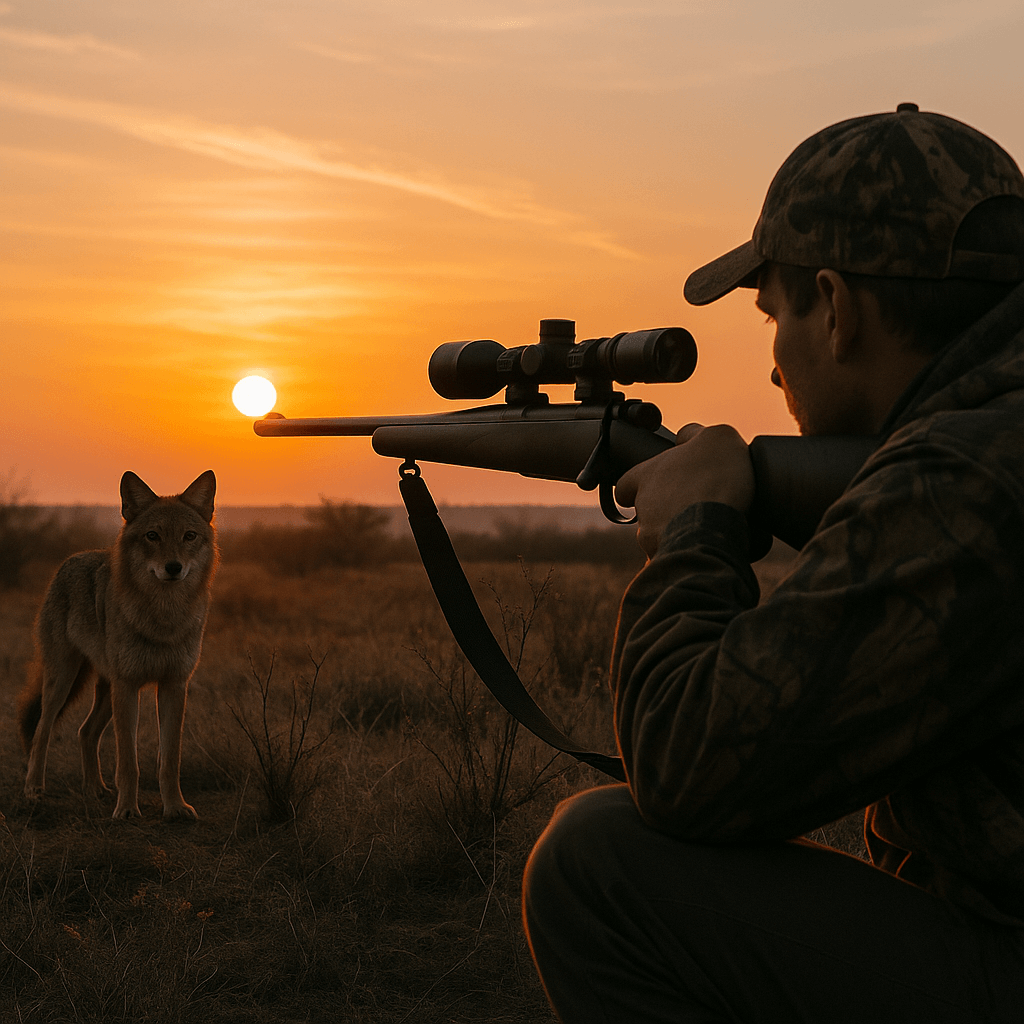Hunting is a thrilling activity that bonds you with nature, refines your abilities, and provides a special feeling of adventure. No matter if you are a first-time hunter venturing into the wild for the first time or an experienced hunter pursuing big game, using the right hunting equipment is crucial to success, security, and enjoyment. Having the right hunting gear can be what makes a rewarding experience or an aggravating one. In this comprehensive, 3000-word guide, we'll discuss all you need to know about how to choose, use, and care for quality hunting gear. From guns to clothing, binoculars to compasses, we'll have it all covered so you know you're thoroughly prepared for your next hunting outing. Let's begin!
Why Investing in Quality Hunting Gear Is Crucial
When you're out in the wilderness, your hunting equipment is your only lifeline. Imagine being deep in the woods with leaky boots or a rifle scope that fogs up at the most inopportune moment. Bad quality hunting equipment can mean discomfort, lost opportunities, or even harm. High-quality hunting equipment, on the other hand, is built to withstand tough situations, help you perform better, and protect you from harm.
Quality hunting equipment is designed to withstand rough landscapes, harsh climates, and days of sitting out in the woods. It's not only tough—quality hunting equipment also enhances your efficiency as a hunter. For example, a good set of binoculars can make it possible to spot game hundreds of yards off, while suitable camouflage clothing means you won't be seen. By investing in quality hunting gear, you're guaranteeing every hunt is a success and one to enjoy.
Key Things to Consider When Selecting Hunting Equipment
Before you begin hunting gear shopping, it's helpful to have an idea of what to search for. The following are the key things to consider when assembling your hunting kit:
Type of Hunting: Various forms of hunting necessitate specific hunting equipment. For instance, bowhunting necessitates light, quiet apparel, whereas waterfowl hunting requires waterproof waders and decoys.
Durability: Your hunting gear needs to hold up in tough conditions. Look for items made from high-quality materials like waterproof fabrics, reinforced stitching, and corrosion-resistant metals.
Comfort: Since you’ll likely wear or carry your hunting gear for hours, comfort is non-negotiable. Choose clothing that fits well, boots that support your feet, and backpacks with padded straps.
Environment: The terrain and weather you’ll encounter play a big role in your hunting gear choices. Cold-weather hunts require insulated clothing, while desert hunts call for lightweight, breathable fabrics.
Budget: While quality hunting gear can be expensive, it’s often worth the investment. If you’re on a budget, prioritize essential items and look for deals or used gear in good condition.
Must-Have Hunting Gear for Every Hunter
To build a solid hunting kit, you’ll need a range of hunting gear that covers all the bases—firearms, clothing, optics, and more. Below, we’ll break down the essential pieces of hunting gear every hunter should own and how to choose the best options.
1. Firearms and Ammunition: The Core of Your Hunting Gear
Your gun is the focal point of your hunting equipment. The gun you use is based on the game you're hunting and the terrain you're hunting in. Some popular choices are listed below:
Rifles: Bolt-action rifles are favored for large game such as deer, elk, or moose because they are accurate and powerful. Semi-automatic rifles are excellent for quicker follow-up shots.
Shotguns: Best suited for birds, small game, or waterfowl, shotguns are universal and available in different gauges (e.g., 12-gauge or 20-gauge).
Bows: For bowhunters, a crossbow or compound bow provides a quiet, difficult means of hunting.
When selecting a firearm, prioritize reliability, ease of maintenance, and a comfortable fit. Test the gun’s weight and balance to ensure it feels right in your hands. Ammunition is equally important—choose the right caliber or gauge for your firearm and the game you’re targeting. Always pack extra ammo in your hunting gear to avoid running out during a critical moment.
2. Optics: Scopes, Binoculars, and Rangefinders
Cry clear vision while hunting, and high-quality optic equipment is indispensable in your toolkit. You'll need these:
Rifle Scopes: Your accuracy gets boosted with a decent scope, especially at distances or during twilight moments. You'll want scopes that have variable magnification (like 3-9x), clean lenses, and weather-defying specs like fog-proof.
Binoculars: Binoculars allow you to surveil the terrain for game without drawing near. A magnification of 8x or 10x with an objective lens of 42mm serves most hunting situations.
Rangefinders: Rangefinders determine the distance to your target, enabling you to make accurate shots. They're perfect for bow hunters or long-distance rifle hunters.
When selecting optics, spend a little extra and go with the better brands with excellent warranties. Your optics are a very important aspect of your hunting equipment, so don't go cheap.
3. Clothing for Hunting: Remaining Comfortable and Camouflaged
Your clothing is another important component of your hunting gear, keeping you comfortable, insulated, and invisible to game. Here's what you should pack:
Camo: Camo patterns assist you in blending in with your environment. Select a pattern that corresponds to your hunting terrain—forest for woods, marsh for wetlands, or snow for winter hunts.
Layering System: A quality layering system consists of a moisture-wicking base layer, an insulating mid-layer (such as fleece), and a waterproof, windproof outer layer. This configuration responds to changing weather conditions.
Boots: Spend money on waterproof, insulated hunting boots that have good ankle support and slippery soles. Break them in beforehand to prevent blisters on your hunt.
Accessories: Don't miss gloves, hats, and face masks. Scent-control garments are also excellent additions to your hunting equipment that will minimize your scent and evade detection by your game.
Attire in your hunting equipment allows you to keep warm, dry, and stealthy to your prey.
4. Knives and Multi-Tools: Handy Tools for the Field
A reliable hunting knife is indispensable in your hunting gear. You’ll use it for field dressing, skinning, and preparing game, as well as other tasks like cutting rope or preparing food. Look for a knife with a sharp, durable blade (stainless steel is a good choice) and a comfortable, non-slip grip. Fixed-blade knives are sturdy and reliable, while folding knives are more portable.
A multi-tool is another worthwhile addition to your hunting equipment. It may feature pliers, screwdrivers, scissors, and other handy tools for making on-the-spot repairs or adjustments in the field. Opt for a light, compact multi-tool that is easy to pack.
5. Backpacks and Bags: Packing Your Hunting Gear
A comfortable, efficient backpack is necessary to carry your hunting equipment. Select a pack that has these characteristics:
Capacity: For day hunts, a 20-30 liter backpack will suffice. For multi-day excursions, use a 40-60 liter pack with a strong frame.
Comfort: Padded shoulder straps, a ventilated back panel, and a hip belt evenly distribute weight and minimize fatigue.
Organization: Several compartments and pockets organize your hunting equipment and make it easily accessible.
Durability: Select a backpack constructed of rip-resistant, water-resistant materials to endure harsh conditions.
Other backpacks also feature hydration systems or attachment points for equipment such as rifles or trekking poles. Your backpack is the base of your hunting equipment, so choose one that suits your requirements.
6. Safety and Navigation Equipment: Remaining Safe in the Wilderness
Safety is the top priority when hunting, and your hunting equipment should have equipment to keep you safe and oriented. Here's what to carry:
First-Aid Kit: A small kit containing bandages, antiseptic wipes, and painkillers can heal minor wounds such as cuts or sprains.
GPS or Compass: Navigation equipment is indispensable for locating yourself in unknown terrain. A GPS unit is easy to operate, but compass and map are good backups.
Headlamp or Flashlight: A strong, hands-free light source is most important for early-morning or late-evening hunting. Carry extra batteries in your hunting equipment.
Blaze Orange: In most places, blaze orange clothing or a vest must be worn to remain visible to other hunters. Even if not legally required, it's a wise safety measure.
These are all important to have on hand to be ready for emergencies and able to get around safely, so they're not optional items in your hunting arsenal.
7. Game Calls and Decoys: Luring Your Prey
For some styles of hunting, game calls and decoys are strong accessories for your arsenal. Calls imitate animal sounds to attract game in, while decoys serve as a visual attraction. These are a few examples:
Deer Calls: Grunt calls or rattling antlers can draw bucks in for the rut.
Turkey Calls: Diaphragm or box calls imitate the sound of hens to attract gobblers.
Waterfowl Calls: Duck or goose calls paired with floating decoys are highly effective for wetland hunting.
Practice using calls before your hunt to sound authentic. Choose high-quality calls and decoys that match the species you’re targeting to maximize their effectiveness in your hunting gear.
Tailoring Your Hunting Gear to Different Environments
Your hunting gear needs to adapt to the specific conditions of your hunting environment. Below, we’ll explore how to customize your kit for different terrains and seasons.
1. Forest and Woodland Hunting Gear
Wooded regions are thick, frequently soggy, and need hunting equipment that prioritizes stealth and protection. Select camouflage with natural colors such as green or brown to blend in with the trees. Waterproof boots with a good grip are necessary for walking on muddy or slippery terrain. A light rifle with a shorter barrel is more manageable in close quarters, and a quiet backpack will not catch on branches or make noise.
2. Mountain Hunting Equipment
Mountain hunting entails steep ascents, rock faces, and unstable weather. Your hunting equipment should consist of heavy-duty, high-ankle boots with good tread to avoid slipping. Thermal layers for temperature fluctuations—pack a lightweight base layer, a mid-layer for warmth, and a waterproof outer. A high-magnification scope or spotting scope is helpful for surveying distant ridges, and a light backpack makes your pack easy to handle.
3. Wetland and Waterfowl Hunting Equipment
Waterfowl hunting is done in marshes or near water, so your hunting equipment should keep you dry. Get chest-high waders, a waterproof camo jacket with sealed seams, and a corrosion-resistant shotgun. Decoys and calls made specifically for ducks or geese help attract birds. A waterproof backpack or dry bag keeps your hunting equipment dry.
4. Cold-Weather Hunting Equipment
Winter hunts require hunting equipment that is focused on warmth and visibility. A heavy-duty parka, insulated gloves, and thermal socks ensure comfort in sub-zero temperatures. Hand and foot warmers are a savior when spending hours on a sit. Opt for a scope with anti-fog lenses to ensure vision stays clear during snowy or icy weather, and bring blaze orange apparel to ensure you remain visible in low-light settings.
5. Desert and Arid Hunting Gear
Hunting during hot, arid conditions needs lightweight, well-ventilated hunting equipment. Choose light-colored clothing with wicking to dissipate heat. Use a large-brimmed hat and glasses for protection against the sun, while boots that ventilate yet remain light preserve foot coolness. A pack suitable for hydrating backpack use is necessary for having plenty of water in your hunting equipment.
Taking Care and Storing Your Hunting Equipment
Regular care extends the life of your hunting equipment and guarantees that it works when you need it. Here's how to keep and store your gear:
Firearms: Clean your rifle after each hunt to strip away dirt, moisture, and residue. Employ a cleaning kit with brushes, rods, and solvent. Keep firearms in a dry, locked case or safe.
Clothing: Wash camo clothing using scent-free detergent to prevent leaving odors that might alert game. Use care instructions to maintain waterproofing and insulation. Dry camo air to avoid fading.
Knives: Sharpen your knife from time to time using a whetstone or sharpening system. Clean the blade when in use and keep it in a sheath to guard the edge.
Optics: Wipe clean lenses with a microfiber cloth and lens cleaner to prevent scratches. Keep scopes and binoculars in padded cases to protect against damage.
Backpacks: Check backpacks for rips, frayed straps, or shattered zippers. Fix minor wear with a sewing kit or patch. Keep in a cool, dry location to avoid mildew.
Store your hunting equipment in labeled containers or a special storage unit. This makes everything easy to find and protects it from moisture or pests.
Budget-Friendly Tips for Creating Your Hunting Equipment Collection
High-quality hunting equipment can be expensive, but you don't have to break the bank to get started. Here are some money-saving tips:
Buy Used: Look online at websites such as eBay or in local stores for used hunting equipment. Firearms, optics, and apparel are usually available at deep discounts.
Shop Sales: Outdoor stores such as Cabela's or Bass Pro Shops have seasonal sales, particularly during Black Friday or after hunting season. Join newsletters to be informed about promotions.
Prioritize the Basics: If money is limited, prioritize essential hunting equipment such as a good firearm, suitable clothing, and heavy boots. Accessory items such as rangefinders or decoys can be added later.
DIY Maintenance: Practice fixing minor tears in clothing or backpacks using a needle and thread. Refinish scratched optics or reseal waterproof seams to make your hunting equipment last longer.
By shopping wisely, you can create a high-quality hunting kit without spending a fortune.
Common Mistakes to Avoid with Hunting Gear
Even seasoned hunters can go wrong when selecting or utilizing hunting gear. Here are some traps to avoid:
Overpacking: Taking too much hunting gear can slow you down and make your hunt less enjoyable. Keep it simple and pack light for day hunts.
Ignoring Fit: Poorly fitting clothing or boots can lead to blisters, chafing, or impaired movement. Try on hunting gear before purchasing and opt for comfort.
Buying Cheap: Cheap hunting gear might appear to be a bargain, but it tends to fail under stress. Spend money on well-reputed brands with good reviews for improved performance and durability.
Skipping Maintenance: Failing to clean or maintain your hunting equipment properly may cause rust, mold, or busted equipment. Adhere to maintenance schedules to maintain your equipment in excellent condition.
Not Researching: All hunting equipment is not for every hunt. Study the game, terrain, and weather to select equipment according to your needs.
Where to Find the Best Hunting Gear
You can buy hunting equipment from many different sources, both online and locally. Some of the most popular places to shop are:
Outdoor Retailers: Cabela's, Bass Pro Shops, and REI are some of the best stores that sell a wide variety of hunting equipment from guns to clothing and accessories. They usually have expert staff to assist your purchase.
Online Shops: Stores like Amazon, MidwayUSA, and OpticsPlanet have great selections and consumer reviews to ensure you make your purchases informed.
Specialty Shops: Regional gun shops, hunting guides, or archery shops give top-quality hunting gear and individual advice. They are perfect for digging up obscure things like handmade bows or location-specific camo.
Secondhand Markets: Pawn shops, thrift stores, or online marketplaces like eBay and Craigslist can be hunting gear treasure troves at cheap prices. Scrutinize used gear to verify that they're in excellent shape.
While making purchases, shop around, read reviews, and review return policies to get maximum value for your hunting gear.
Final Thoughts on Mastering Your Hunting Gear
A trusted arsenal of hunting equipment is built through research, investment, and care. Begin with the necessities—firearms, clothing, optics, and safety equipment—and build up slowly to specialized tools such as calls or decoys as you continue to gain experience. Quality takes precedence over quantity, adapt your hunting equipment to your terrain, and take proper care of it so that it will last you years.
By skipping common pitfalls, smart shopping, and selecting hunting equipment that suits your requirements, you'll be fully prepared for any hunting trip. Whether you're ghosting deer in the mountains, calling turkeys in the forest, or laying decoys for ducks, the proper hunting equipment will keep you safe, comfortable, and successful. So get equipped, get out there, and make your next hunt one to remember!





